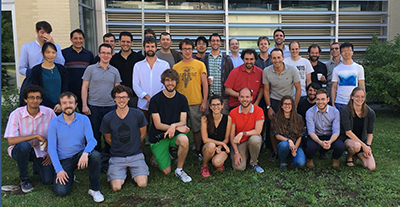Overview
[ FranûÏais ]
This workshop will focus on numerical methods and applications of the theory of Optimal Transportation (OT). The OT problem defines a geometric distance, the Wasserstein distance, between probability measures. It can also be used to compute barycenters, geometric averages of measures. It has applications to PDEs, Riemannian Geometry, as well as in computer graphics, machine learning and freeform optics.
Computing the distance requires solving the OT problem, a convex optimization problem, which until recently has been intractable in cases of interest. This workshop will focus on improving existing numerical methods and on applications of the OT problem.
The study of the OT problem began two centuries ago with Gaspard Monge's work on "des remblais et deblais" in 1781. In the 1940's, Leonid Kantorovitch solved the dual problem and interpreted it as an economic equilibrium, later winning the 1975 Nobel prize in economics. Following the seminal discoveries of Brenier in the 90's, Optimal Transportation has received renewed attention from mathematical analysts, notably Cedric Villani, who was awarded the Fields Medal in 2010.
This conference is part of a three year INRIA/McGill collaboration, with workshops in Paris, McGill, BIRS and Oberwolfach.
Please note that the workshop will be held at the Pavillon J.-Armand-Bombardier at the Universitûˋ de Montrûˋal.
Click on the photo to enlarge.

